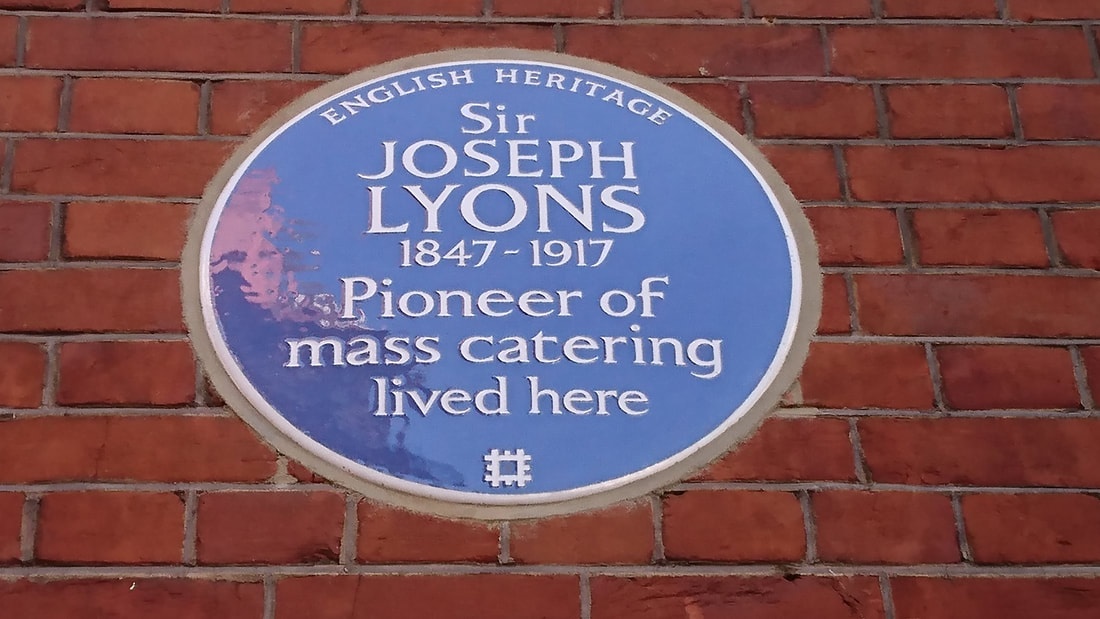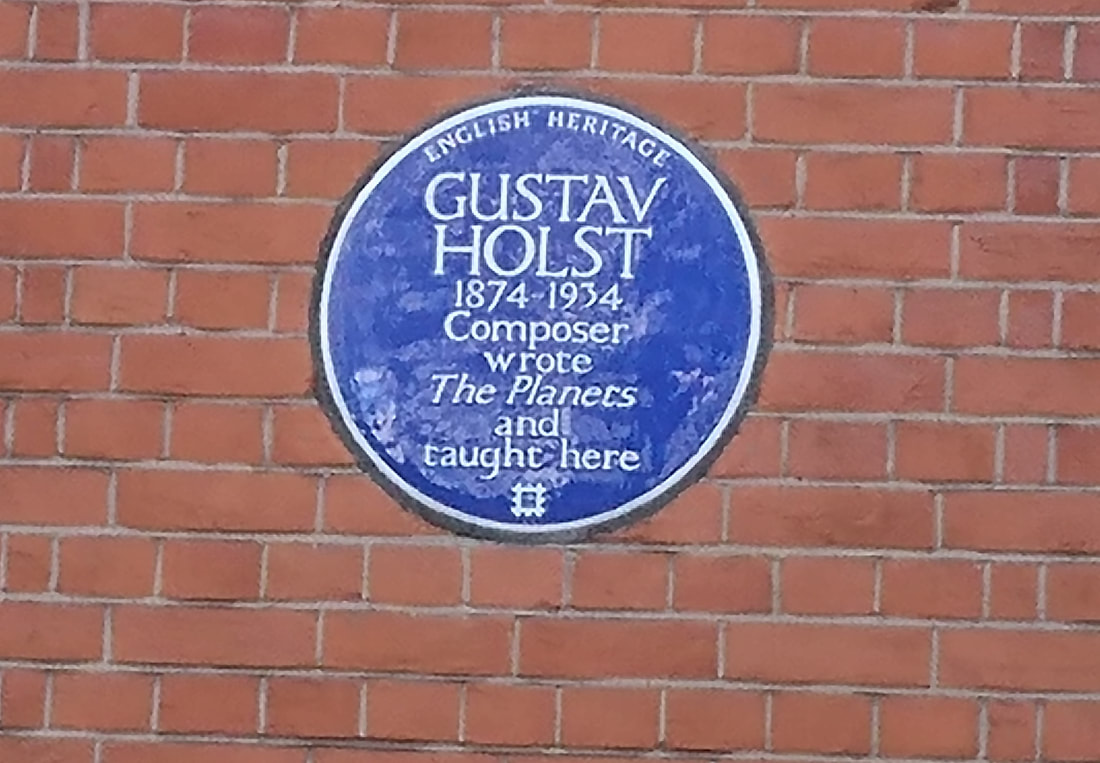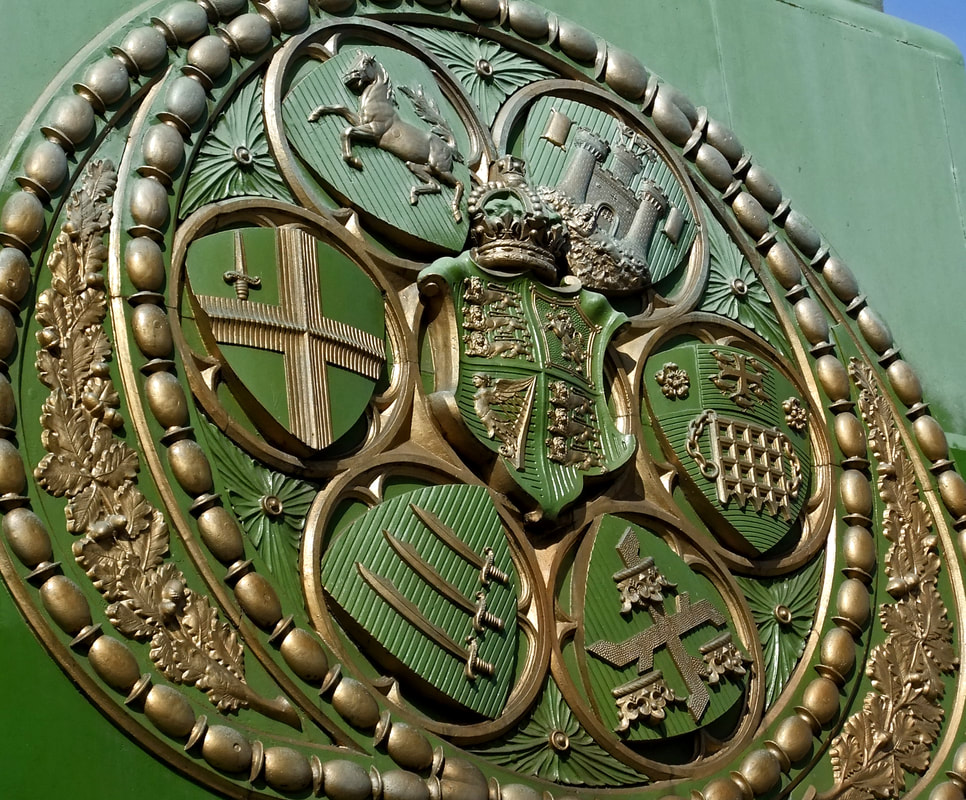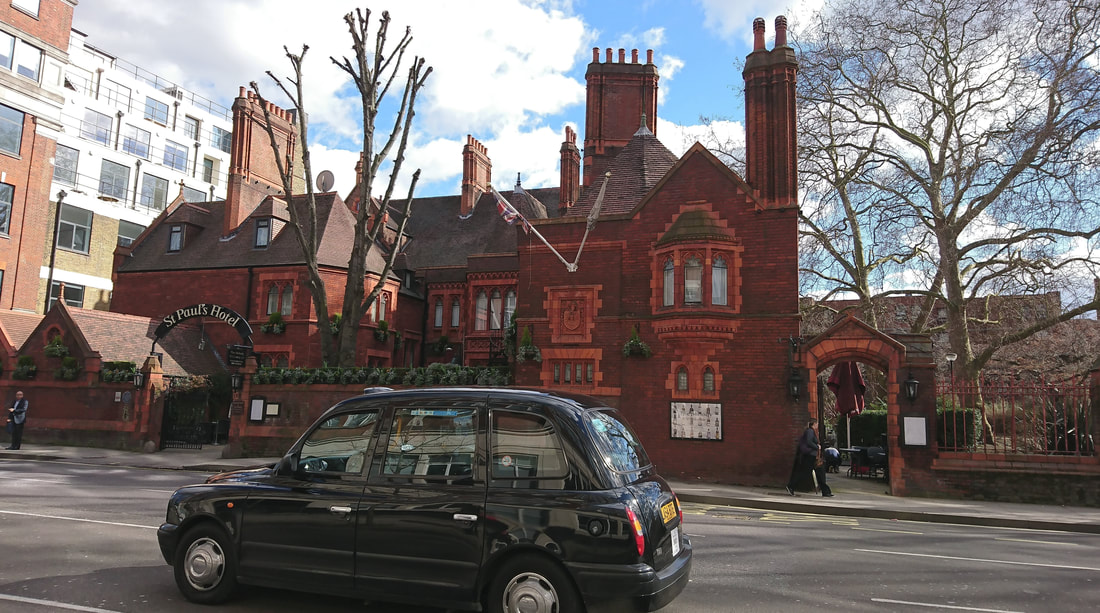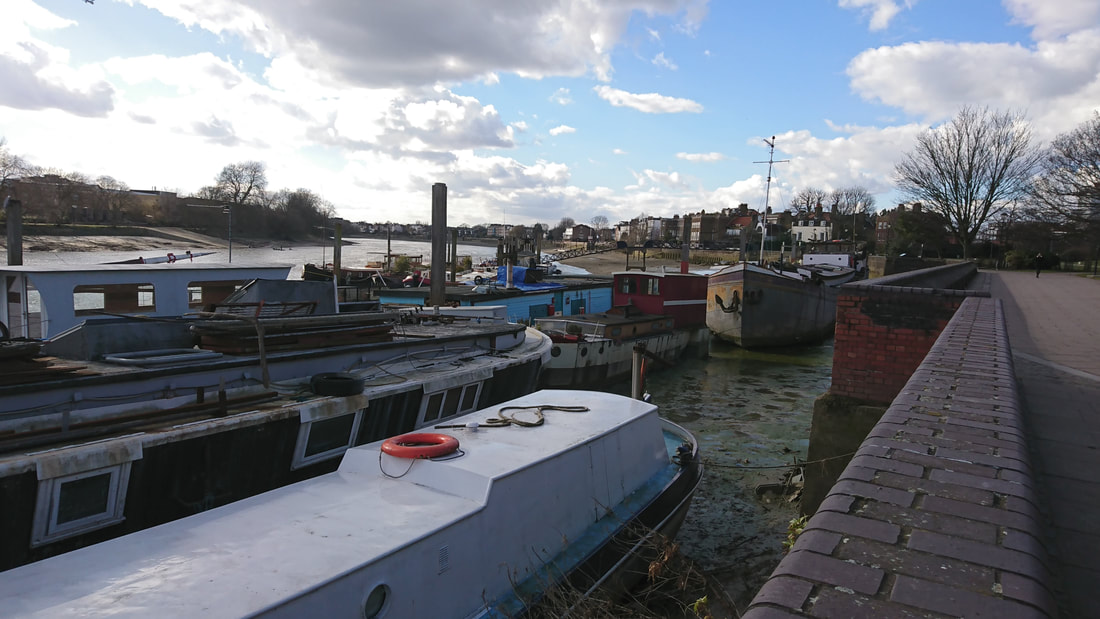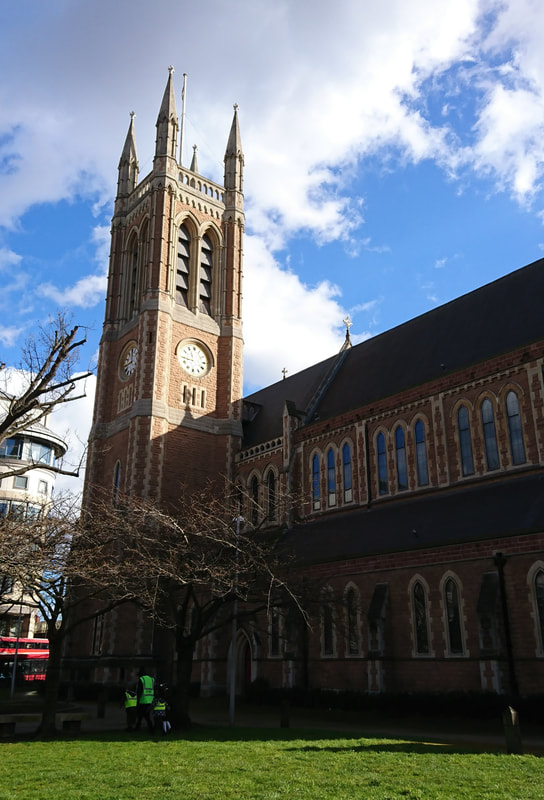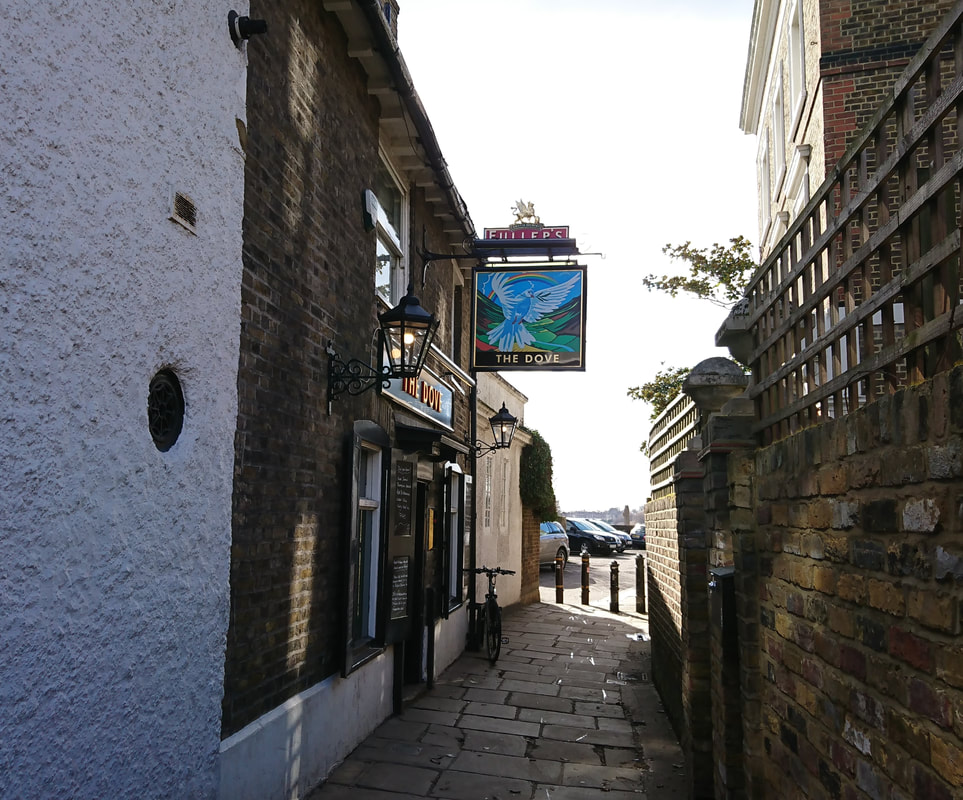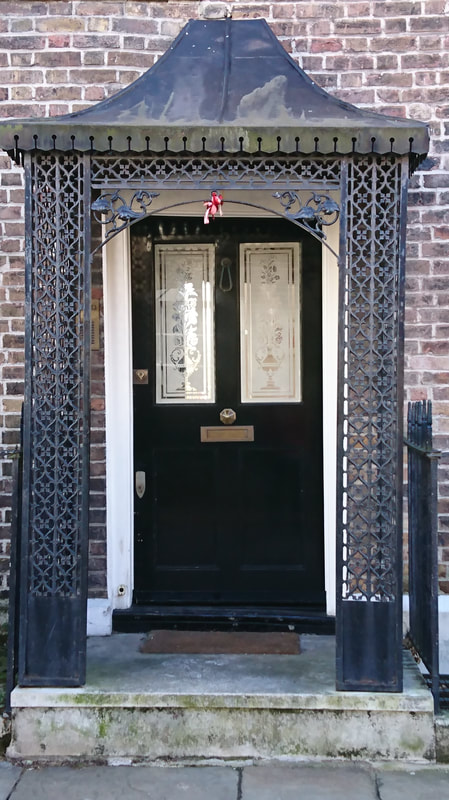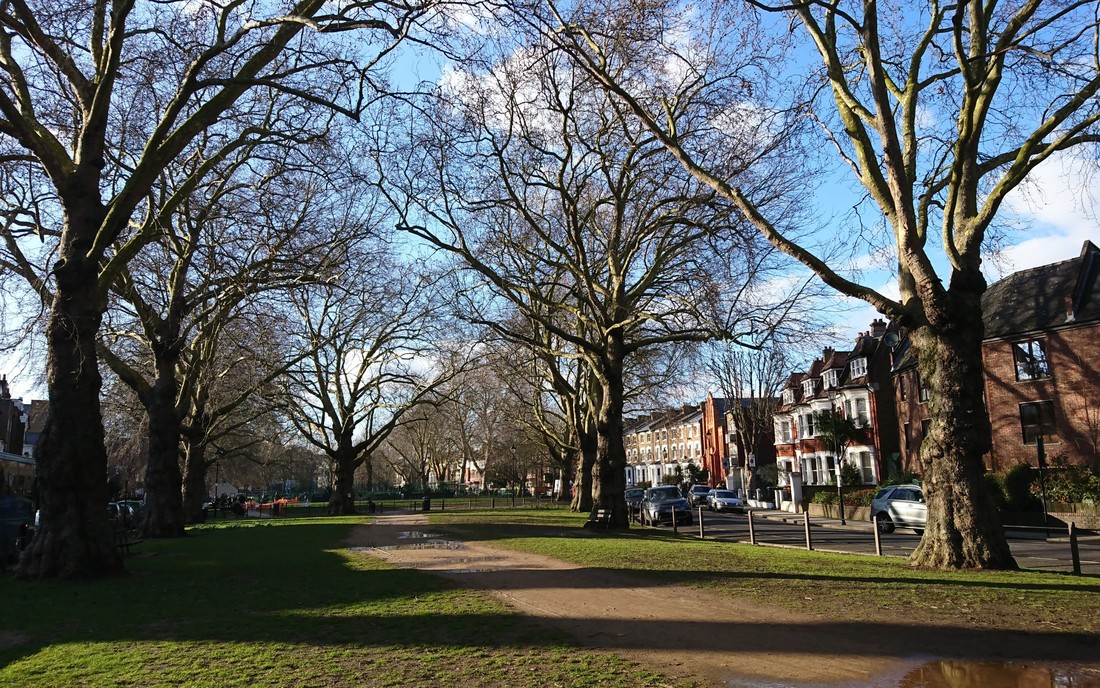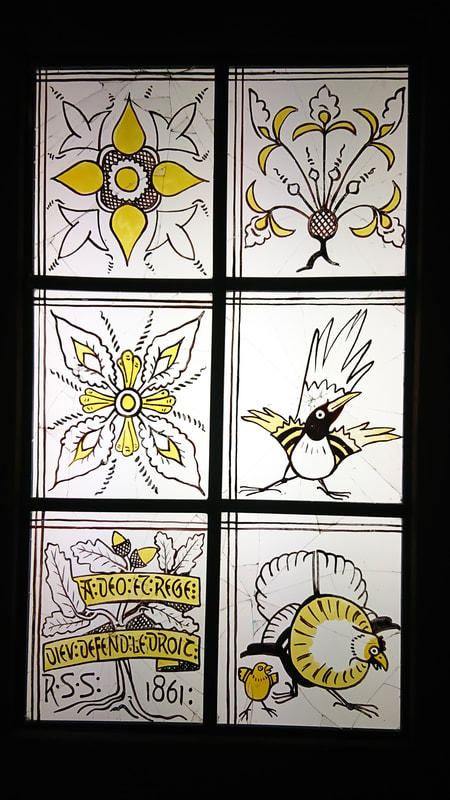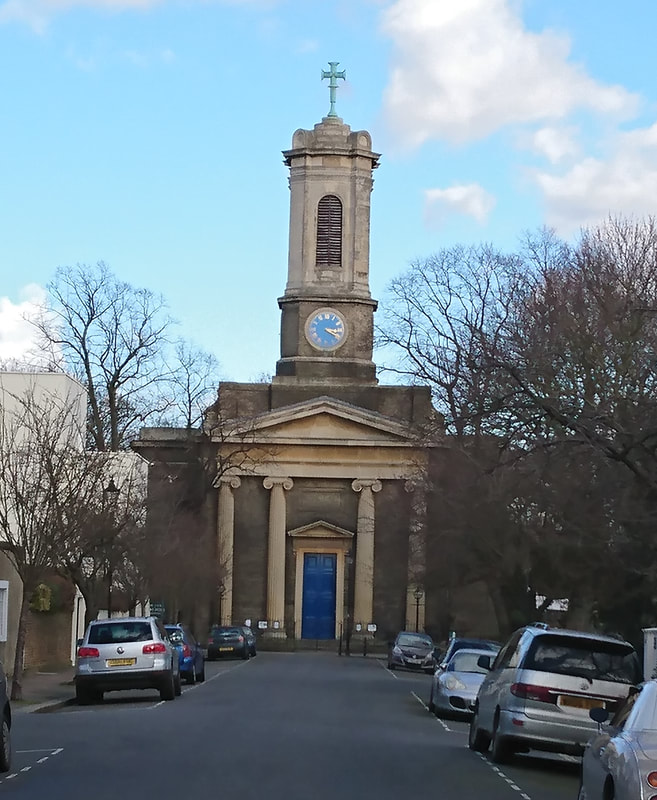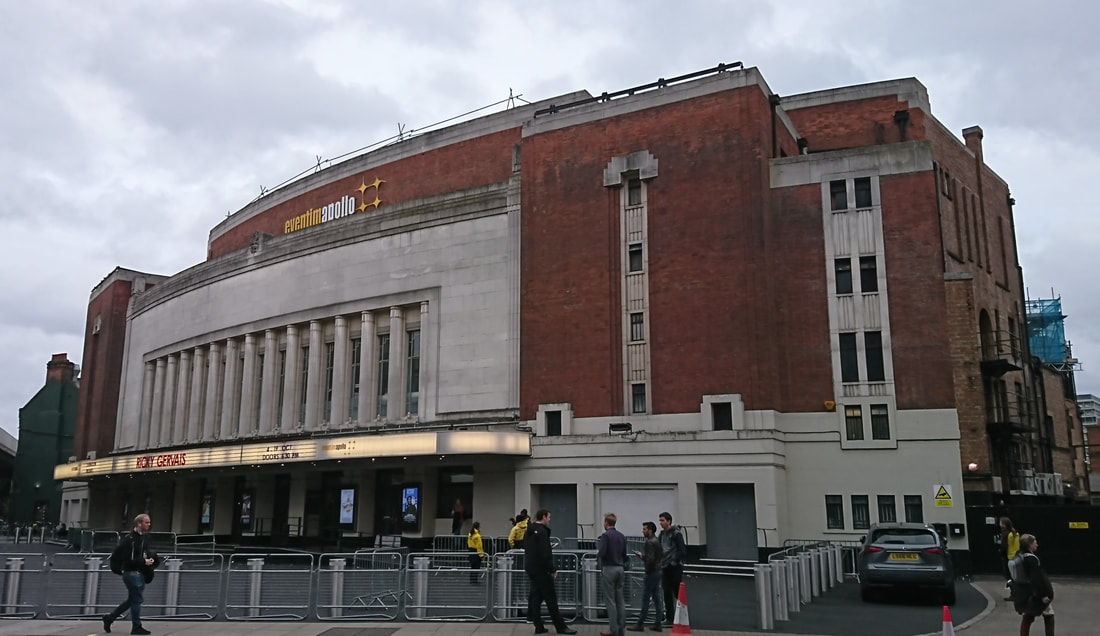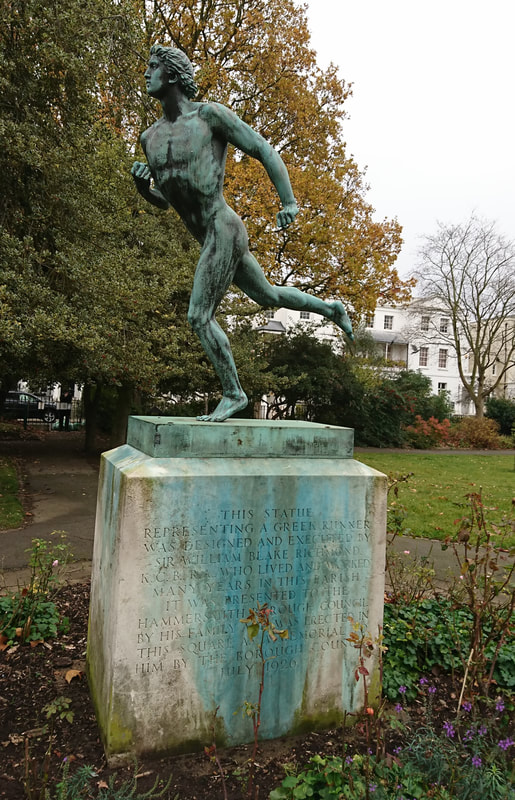Did you know?
The 18th century Dove Pub
has the smallest bar in England.
The 18th century Dove Pub
has the smallest bar in England.
|
During the 17th and 18th centuries Hammersmith was a small rural village used as a summer retreat for the gentry and city merchants. When the railway arrived in 1864, industry developed and grew. For example, breweries, motor works, water pumping, bakeries and boat-houses. A channel called The Creek allowed goods to be transported quickly from the Thames riverside to King Street.
By the late 19th century Hammersmith had become a well-established town with civic, religious and educational buildings. Large social housing estates were constructed from 1900. The construction of the Great West Road in 1920-25 separated the north-south links from King Street to the river. Bombing in 1940-1941 caused much damage and redevelopment afterwards. Hammersmith continues to redevelop with new residential and office blocks clustered around the gyratory. |
We meet at Kensington Olympia Station We introduce ourselves over coffee before we begin the walk |
On the walk we see:
... and much more! |
Did you know?
Cadby Hall, site of Lyons Teashops factory,
was the location of the first ever business
computer (LEO, Lyons Electronic Office),
developed 1949-51 to automate clerical tasks.
History notes will be given at the end.
|
Don't forget the vocabulary! After your walk, find the new vocabulary here ... |
Did you know?
During the 18th & 19th centuries, the area was known for market gardening. Many new plants were introduced to the UK, including roses and fuchias. |
